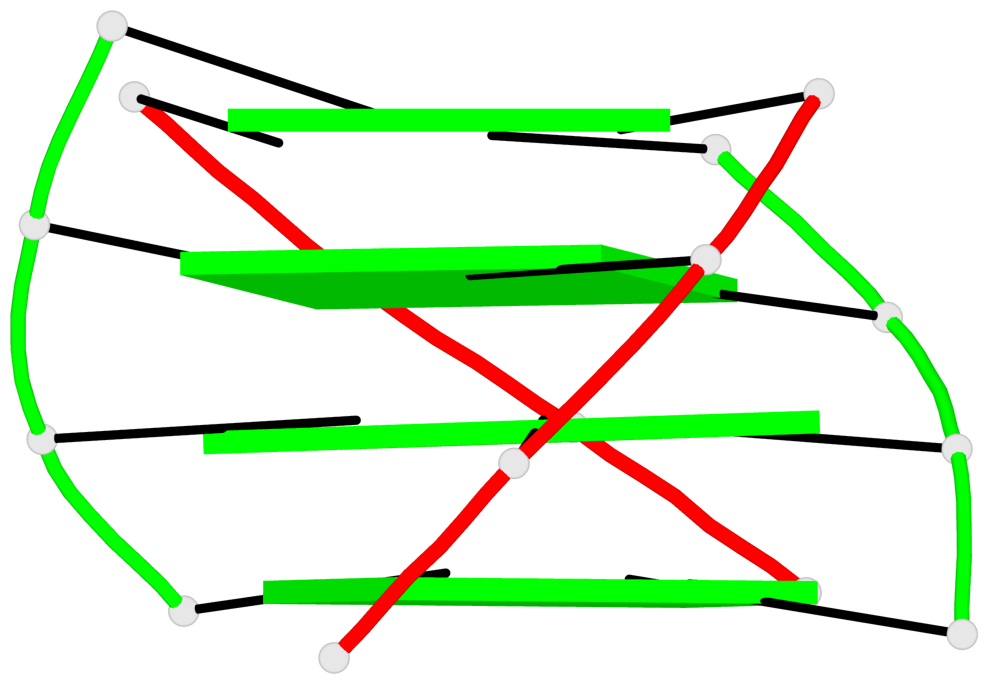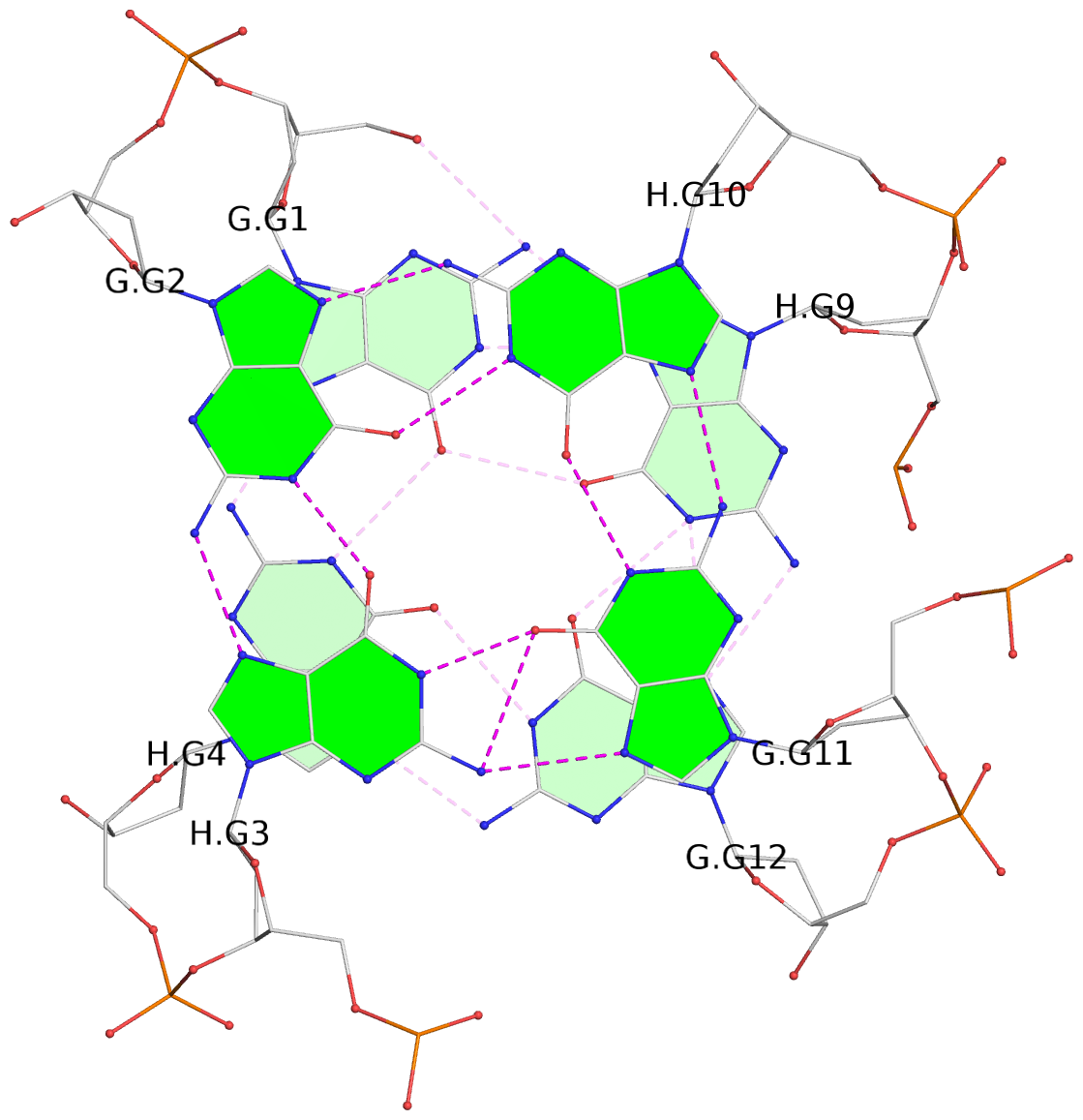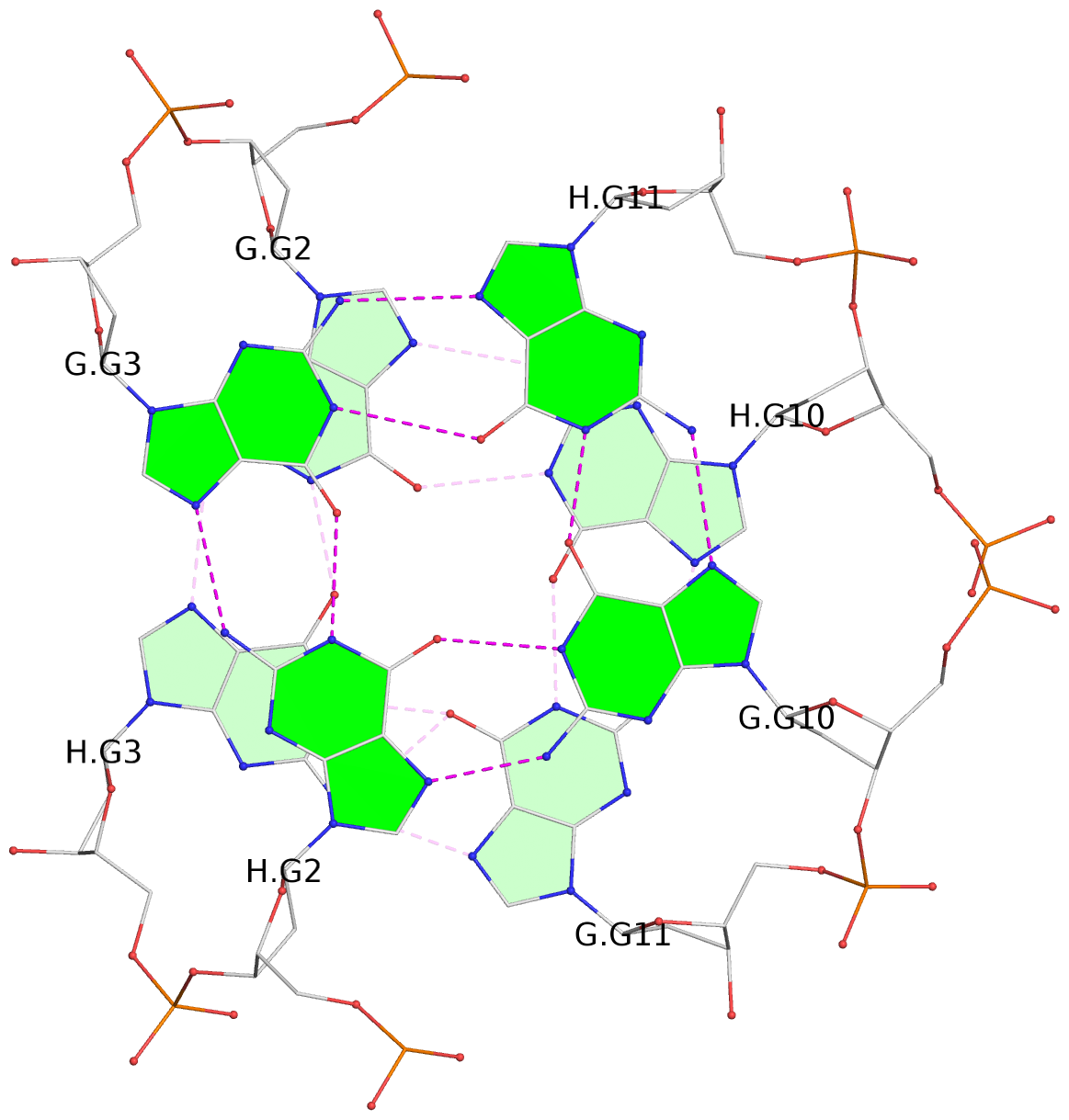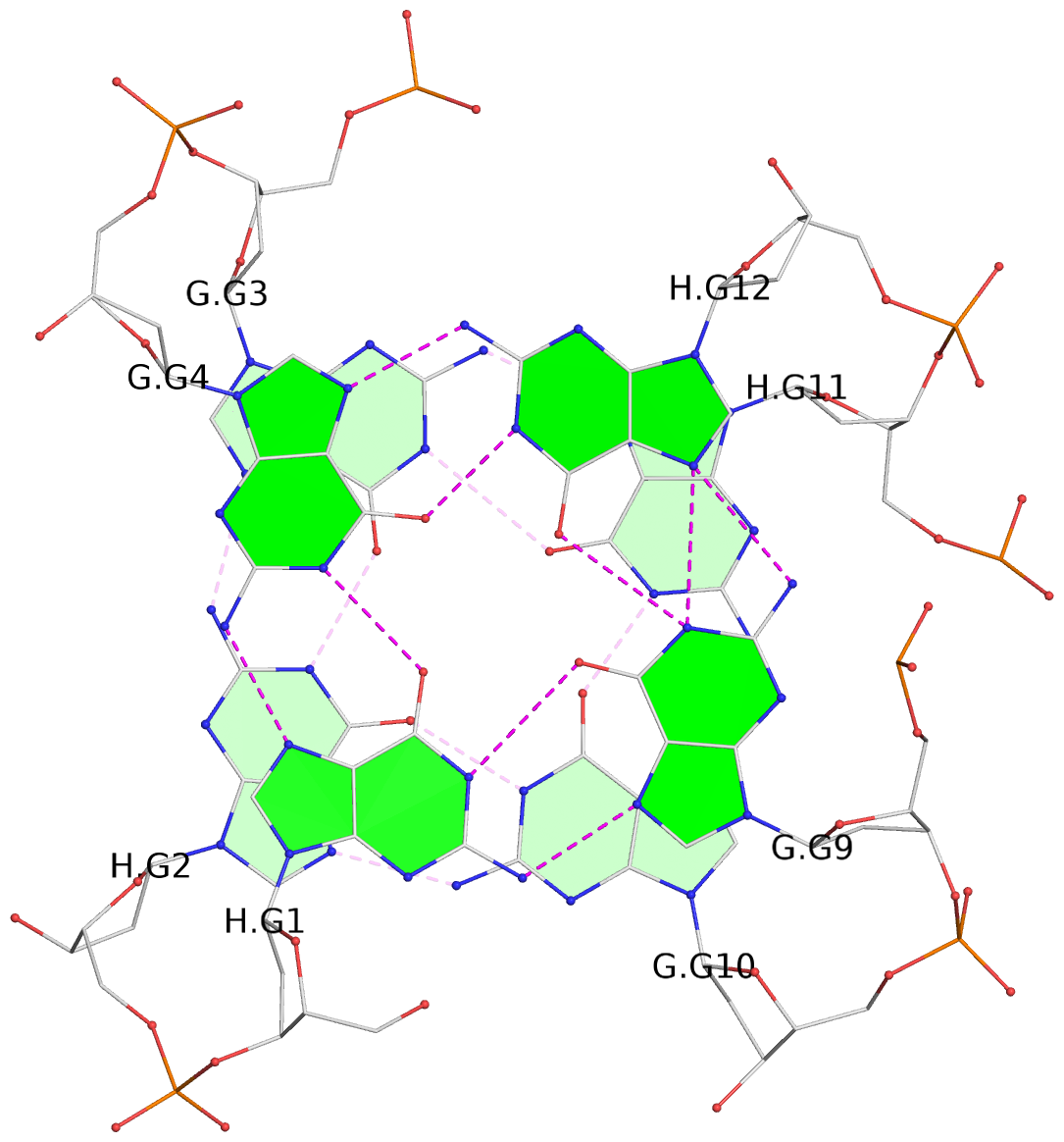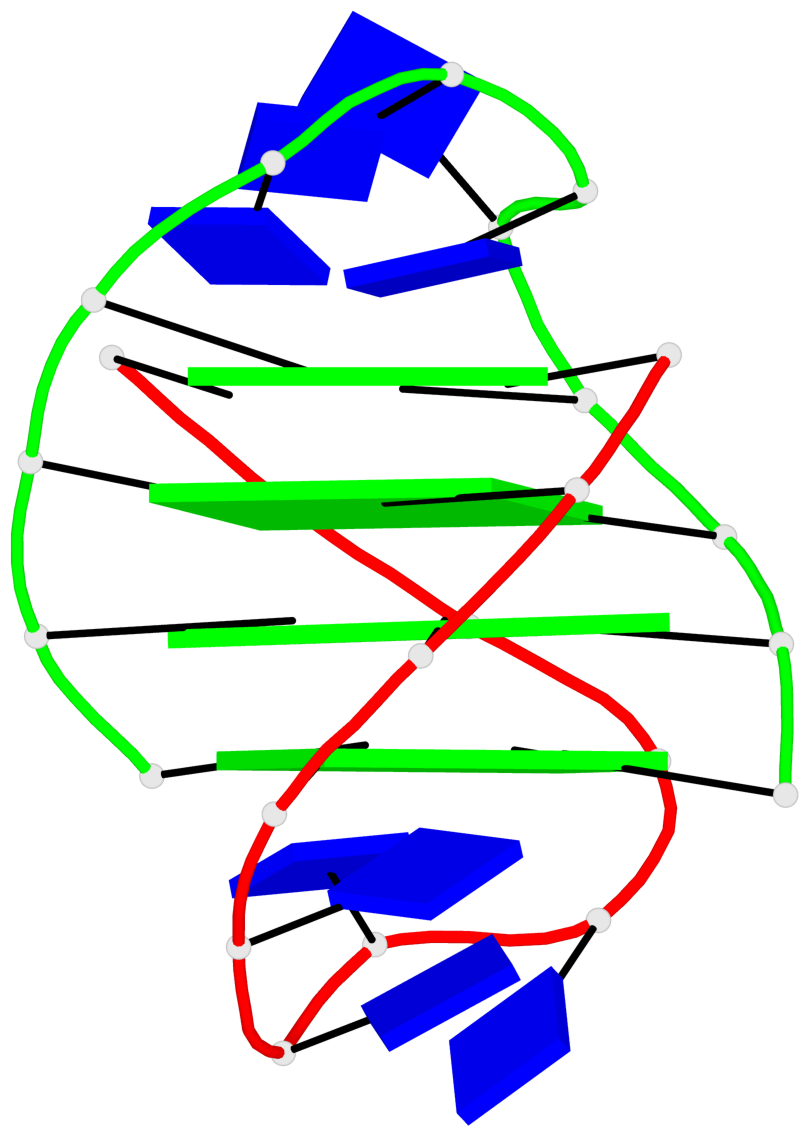Detailed DSSR results for the G-quadruplex: PDB entry 1ph7
Created and maintained by Xiang-Jun Lu <xiangjun@x3dna.org>
Citation: Please cite the NAR'20 DSSR-PyMOL schematics paper and/or the NAR'15 DSSR method paper.
Summary information
- PDB id
- 1ph7
- Class
- DNA binding protein-DNA
- Method
- X-ray (2.9 Å)
- Summary
- Crystal structure of the oxytricha nova telomere end-binding protein complexed with noncognate ssDNA ggggttttgigg
- Reference
- Theobald DL, Schultz SC (2003): "Nucleotide Shuffling and ssDNA Recognition in Oxytricha Nova Telomere End-Binding Protein Complexes." Embo J., 22, 4314-4324. doi: 10.1093/emboj/cdg415.
- Abstract
- Sequence-specific protein recognition of single-stranded nucleic acids is critical for many fundamental cellular processes, such as DNA replication, DNA repair, transcription, translation, recombination, apoptosis and telomere maintenance. To explore the mechanisms of sequence-specific ssDNA recognition, we determined the crystal structures of 10 different non-cognate ssDNAs complexed with the Oxytricha nova telomere end-binding protein (OnTEBP) and evaluated their corresponding binding affinities (PDB ID codes 1PH1-1PH9 and 1PHJ). The thermodynamic and structural effects of these sequence perturbations could not have been predicted based solely upon the cognate structure. OnTEBP accommodates non-cognate nucleotides by both subtle adjustments and surprisingly large structural rearrangements in the ssDNA. In two complexes containing ssDNA intermediates that occur during telomere extension by telomerase, entire nucleotides are expelled from the complex. Concurrently, the sequence register of the ssDNA shifts to re-establish a more cognate-like pattern. This phenomenon, termed nucleotide shuffling, may be of general importance in protein recognition of single-stranded nucleic acids. This set of structural and thermodynamic data highlights a fundamental difference between protein recognition of ssDNA versus dsDNA.
- G4 notes
- 4 G-tetrads, 1 G4 helix, 1 G4 stem, (2+2), UDDU
Base-block schematics in six views
List of 4 G-tetrads
1 glyco-bond=s--s sugar=---- groove=w-n- planarity=0.324 type=bowl nts=4 GGGG G.DG1,H.DG4,G.DG12,H.DG9 2 glyco-bond=-ss- sugar=---- groove=w-n- planarity=0.124 type=planar nts=4 GGGG G.DG2,H.DG3,G.DG11,H.DG10 3 glyco-bond=s--s sugar=---- groove=w-n- planarity=0.166 type=other nts=4 GGGG G.DG3,H.DG2,G.DG10,H.DG11 4 glyco-bond=-ss- sugar=---- groove=w-n- planarity=0.292 type=bowl nts=4 GGGG G.DG4,H.DG1,G.DG9,H.DG12
List of 1 G4-helix
In DSSR, a G4-helix is defined by stacking interactions of G-tetrads, regardless of backbone connectivity, and may contain more than one G4-stem.
Helix#1, 4 G-tetrad layers, inter-molecular, with 1 stem
List of 1 G4-stem
In DSSR, a G4-stem is defined as a G4-helix with backbone connectivity. Bulges are also allowed along each of the four strands.






